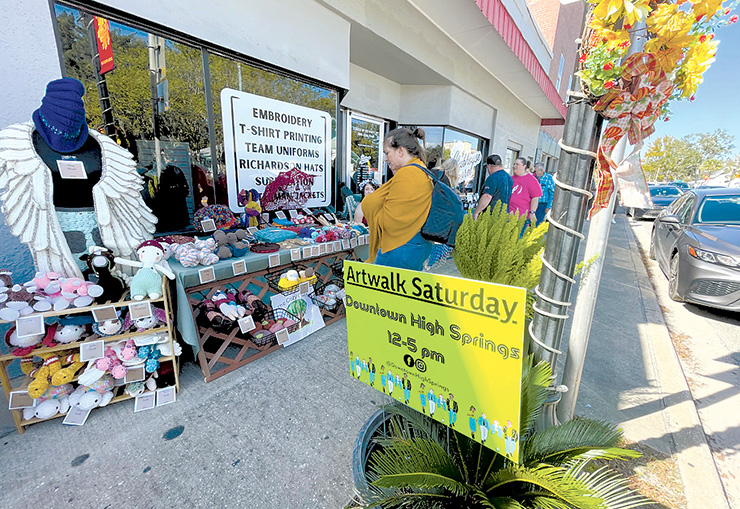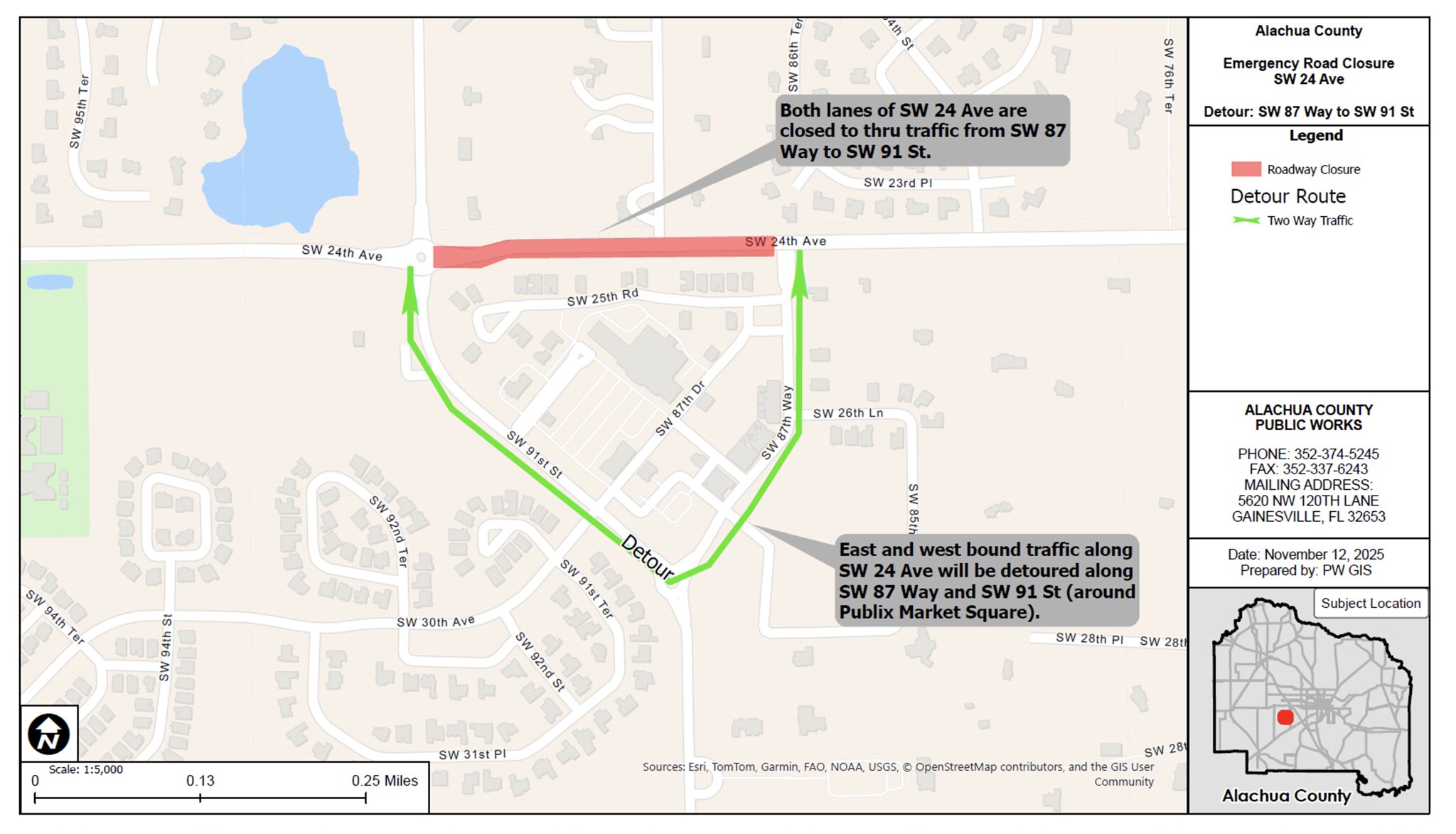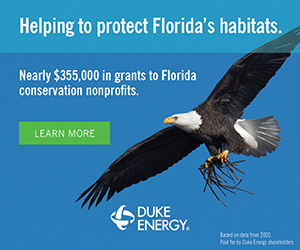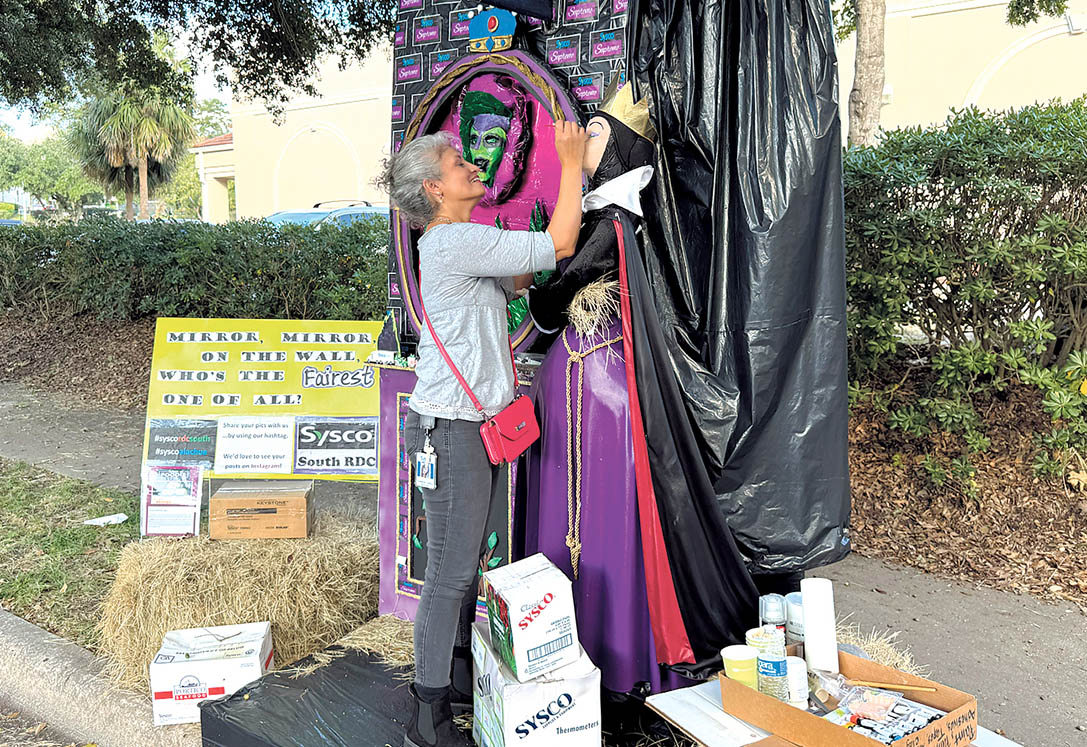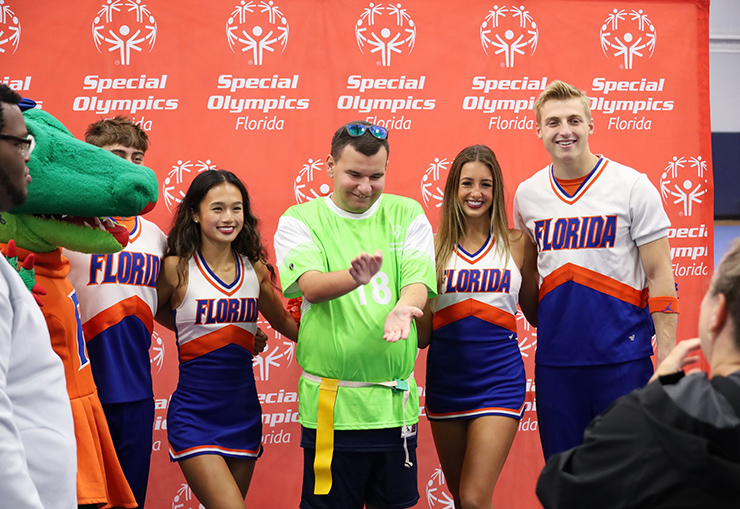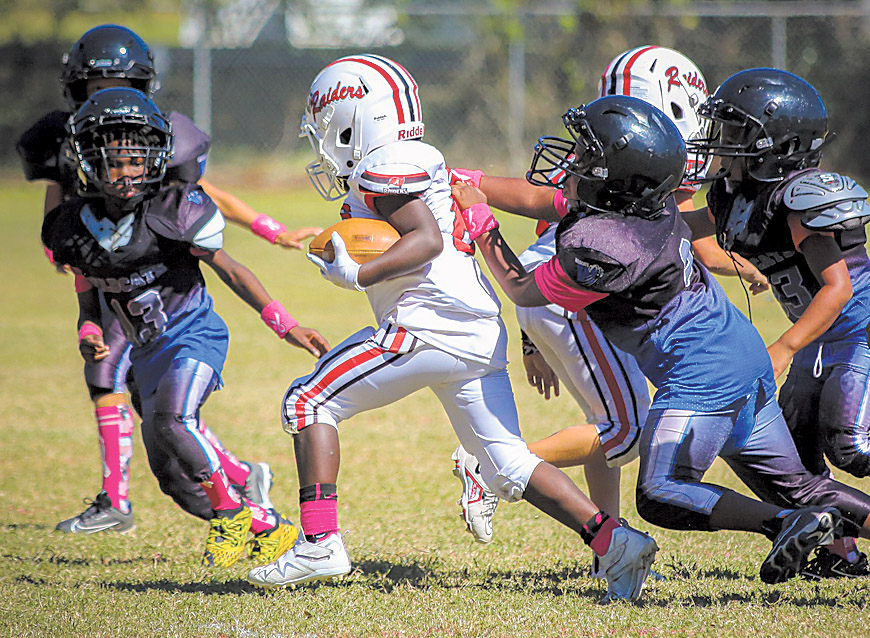|
In The Spotlight

Trick-or-Treaters fill Main Street in Alachua during the city’s annual Halloween celebration, weaving through crowds under festive lights as local businesses hand out candy and families take in the lively holiday atmosphere. / Photo special to Alachua County Today
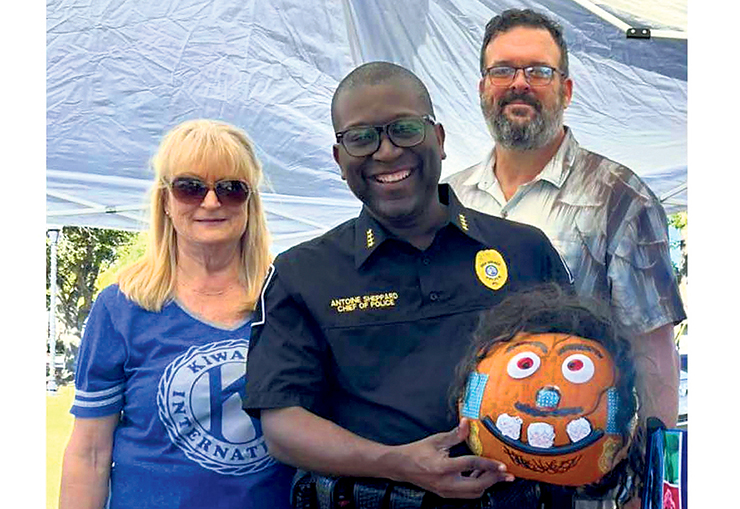
Families and participants enjoyed the sixth annual pumpkin decorating contest in downtown High Springs on Friday. The event, hosted by the Kiwanis Club of Santa Fe, brought out community members for Halloween fun and treats. / Photo special to Alachua County Today
More News

Smiles filled the Legacy Multipurpose Center as volunteers, families, and young athletes gathered for a recent Limitless Legends soccer session, an inclusive sports program founded by Amanda Guevara, a pediatric physical therapist. The group meets monthly to ensure every child — regardless of physical ability — can experience the joy of the game./Photo special to Alachua County Today
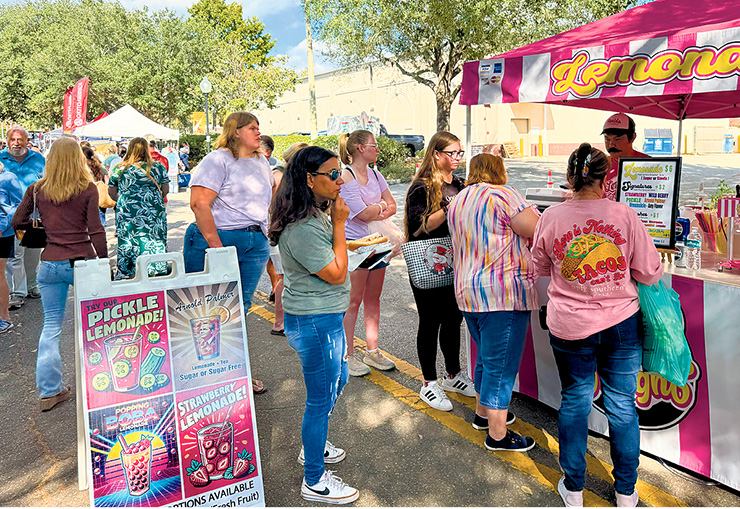
A steady stream of visitors packs Main Street as local businesses, artisans and food vendors showcase their offerings at the 2025 Fall Festival. / Alachua County Today Staff Photographer
ALACHUA ‒ Downtown Alachua once again transformed into a lively corridor of music, food and color on Sunday as the Alachua Main Street Fall Festival returned to historic Main Street, drawing crowds that filled the heart of the city from end to end. The festival continued its tradition of showcasing local culture while supporting educational opportunities for area students.
Hosted by the Alachua Business League (ABL) with support from the City of Alachua and dozens of community partners, the event brought together families, visitors and longtime residents for an afternoon of celebration. As in past years, festival proceeds will help fund scholarships for local students planning to attend Santa Fe College — a mission that has become a hallmark of ABL’s community involvement.
Main Street was closed to traffic for the day, creating a pedestrian-friendly promenade lined with vendor tents, food trucks and demonstrations. Visitors moved at an easy pace between stalls offering handmade crafts, local art, boutique items and fall-themed goods. The aroma of barbecue and kettle corn mingled with the sound of live music drifting from the entertainment area, where local performers kept the energy high throughout the afternoon.
Children flocked to hands-on activity stations and family attractions, giving the event its signature mix of small-town charm and festival spirit. Adults browsed the wide selection of vendors or gathered near food stands for lunch and desserts, turning the street into a bustling outdoor marketplace.
Parking filled quickly as attendance grew through the day, with festival-goers using lots near downtown, City Hall and the area surrounding Skinner Park. Many chose to walk in from nearby neighborhoods, adding to the steady foot traffic that defined the event.
Vendor participation remained strong again this year, with booths sold out well in advance — a sign of continued support from local artisans, small businesses and regional makers. Organizers say the turnout reflects the festival’s important role in highlighting Alachua’s growing business community while keeping its small-town identity at the forefront.
Over the years, the Alachua Business League has awarded thousands of dollars in scholarships through funds raised at the Fall Festival and other community events. That philanthropic purpose, blended with a festive atmosphere, is one of the reasons the event has endured as one of the city’s most anticipated annual traditions.
As photos from this year’s festival show, the 2025 event delivered the familiar warmth and hometown appeal that residents have come to expect. For those who missed it, organizers encourage planning ahead for next year — promising another day filled with entertainment, community spirit and opportunities to support Alachua’s next generation.
# # #
Email editor@
alachuatoday.com
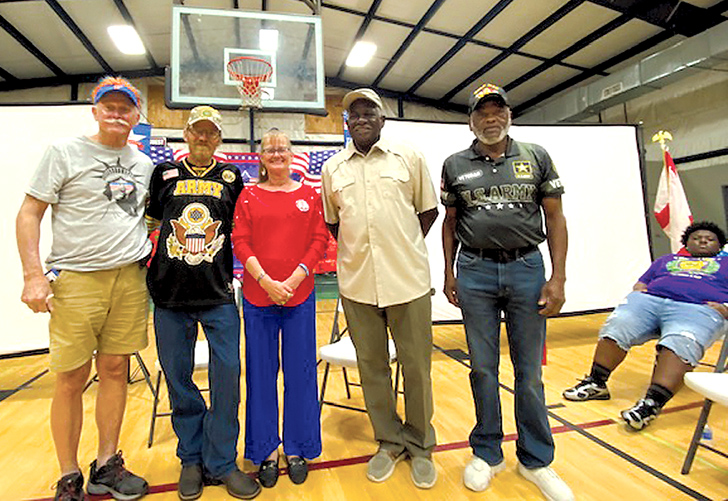
Retired Alachua City Mayor Gib Coerper (Navy, Ret.), Jackson Gold Star Family, Horace Jenkins (Navy) and Major (Ret.) Charlie Jackson / Photo special to Alachua County Today
ALACHUA – The Young Men of Manhood Youth Development Foundation, Inc., hosted its first All-American Veterans EXPO-2025 @ Alachua on Saturday, Nov. 8, 2025, bringing together veterans, Gold Star Families, mentors and young people for a day of storytelling, education and recognition at the Hal Brady Recreation Complex.
The event opened with a 9 a.m. brunch before shifting into a full day of intergenerational engagement. Local veterans, parents, mentors and mentees spent the morning sharing their experiences with attendees and with the young men of the foundation’s mentoring program.
Foundation members used the expo to launch a long-term oral history project aimed at preserving the stories of Alachua County veterans. According to the organization, the young men “seized this event as an opportunity to kick off their first in a series of interviews with a goal of producing a video of Alachua County veterans telling their stories.”
The initial round of interviews captured accounts from veterans who served in World War II, the Korean War, the Vietnam Conflict, the Gulf War — including Operations Desert Shield and Desert Storm — Operation Dawn, Operation Iraqi Freedom and Operation Enduring Freedom. The foundation plans to continue conducting interviews throughout 2025, with the goal of completing the project by Veterans Day 2026.
Throughout the day, representatives from the Malcolm Randall Veterans Hospital and the Florida Veterans Office in Gainesville provided attendees with information on available military benefits. Their presentations covered housing, medical and health care services, education, suicide prevention, homelessness prevention and the process for filing disability claims.
The program also included recognition of the 3396th Reserve Reception Battalion for its military service. Major (Ret.) Charlie Jackson, former Alachua Mayor Gib Coerper (Navy, Ret.) and Mr. Jenkins (Navy) led the honors. Accepting on behalf of the battalion was First Sergeant Larry McDaniel.
The event concluded with a tribute to members of Gold Star Families, whose loved ones died in military service. Organizers extended “special thanks to our many sponsors who helped in making the first All-American Veterans EXPO-2025 @ Alachua a success.”
# # #
email editor@
alachuatoday.com
HIGH SPRINGS – The High Springs City Commission closed out its 2024–25 agenda and ushered in a new governing year during a Nov. 13, 2025, meeting that included the swearing-in of a returning commissioner, board appointments, grant approvals and progress on several major city projects.
Unfinished Business Concludes FY 24–25
Commissioners began the evening by addressing remaining items from the previous fiscal year. The board voted unanimously to hire Fred Fox Enterprises, Inc. to provide administrative services for the city’s Community Development Block Grant (CDBG) Neighborhood Revitalization project.
High Springs was awarded a $700,000 small cities CDBG grant through Florida Commerce. To support the initiative, commissioners also approved CPH Consulting, LLC in response to Requests for Qualifications for professional engineering services.
In addition, the Commission voted unanimously to approve three firms for continuing engineering contracts: CPH Consulting, Kimley-Horn and Woodard & Curran. CPH—previously known as Mittauer & Associates—has a long history with the city, including engineering work tied to major sewer system improvements.
With all unfinished business resolved, Commissioner Tristan Grunder, who had been re-elected, formally adjourned the final meeting of the 2024–25 fiscal year.
Commission Reorganized for FY 25–26
City Clerk Angela Stone administered the oath of office to Grunder as he began his second term on the City Commission. During the reorganization, Commissioner Andrew Miller was elected mayor and Commissioner Wayne Bloodsworth Jr. was chosen as vice mayor. Commissioners then switched seats as Miller assumed leadership of the meeting.
The annual reorganization also included appointments to city advisory boards. Grunder was named chair of the Community Redevelopment Agency (CRA). Zachary Walter was appointed to the Plan Board, while Linda Hewlett and Joanne Trembly were reappointed to the Parks and Recreation Board.
Commissioners also authorized the standard list of check signers for the new fiscal year. The mayor, vice mayor, city manager and city clerk are empowered to sign city checks. Following approval, an updated resolution is submitted to the bank to formalize the authorization.
Public Safety and City Projects Move Forward
High Springs Police Chief Antoine Sheppard informed the Commission that the city has been awarded a $65,000 grant to replace aging police radios. Commissioners voted unanimously to accept the funding.
The board also unanimously authorized a services agreement with Hoffman Construction, Inc. for structural roof repairs to the historic Priest Theatre. In September, the city awarded Hoffman a contract totaling $550,828 for roof replacement and structural upgrades, along with an additional $18,280 to replace the parapet wood apron on the building’s front elevation.
Budget Adjustments Reviewed
Finance Director Diane Wilson presented the Final Budget Amendment for Fiscal Year 2025, outlining significant adjustments and responding to commissioner questions. After discussion, the Commission approved the ordinance on first reading.
# # #
Email cwalker@
alachuatoday.com
NEWBERRY – The Nov. 10, 2025, Newberry City Commission meeting marked a moment of transition as officials prepared to convene in the old City Hall chambers for the final time. Beginning Nov. 24, future Commission meetings will take place in the new City Hall, a nearly complete facility set to open later this month.
Ahead of that change, Mayor Tim Marden reminded residents that he and City Manager Jordan Marlowe will be available to lead group tours of the new building from 10 a.m. to noon on Saturday, Nov. 15, during the Newberry Fall Festival. The preview event offers the public an early look at the city’s consolidated government center before its official debut.
The Commission then addressed land use, planning and community health initiatives as commissioners worked through a broad agenda that included subdivision approvals, interim zoning considerations and a formal request from a local nonprofit.
Quarry Fields Subdivision Approved
Commissioners held a quasi-judicial public hearing before voting to approve a final plat petition from 3002 Surveying, LLC, on behalf of property owner Amanda Moore. The request subdivides a 40-acre tract at 3789 N.W. 202nd Street into four lots. The property, known as Quarry Fields, sits outside the Urban Service Area and carries an Agriculture future land-use classification with Agricultural (A) zoning.
The petition also sought a waiver from preliminary plat and construction plan requirements normally required for a major subdivision under the City’s code. Principal Planner Jean-Paul Perez explained that because each of the four lots will connect directly to an existing public roadway and no new water or wastewater infrastructure is required, the typical preliminary planning steps do not apply in this case.
Following the hearing, the Commission approved the plat and associated waivers as requested.
Interim Zoning Ordinance Considered
Commissioners also advanced the first reading of an interim zoning ordinance designed to support the ongoing rewrite of the City’s land development regulations (LDRs). The initiative follows the City’s 2024 update to nine of the 11 elements in its Comprehensive Plan.
A Comprehensive Plan serves as a long-range blueprint for growth and development, guiding decisions about land use, transportation, housing, infrastructure, conservation and public facilities. Once adopted, the plan is implemented through the LDRs, which contain the specific rules developers and property owners must follow.
Newberry has already secured a consultant to lead the LDR rewrite. In the meantime, staff recommended temporary adjustments to certain subdivision standards to address immediate community needs and to avoid development conflicts while the full rewrite is underway.
During a legislative public hearing, commissioners voted to approve Ordinance 2025-72 on first reading. The measure proposes limited, short-term changes to portions of Appendix B, Article 5 of the City’s Code related to subdivision regulations and street standards.
With Commissioner Mark Clark absent, several commissioners noted that he may wish to offer additional input when the ordinance returns for a second reading. The second reading is scheduled for Nov. 24. If ultimately approved, the interim ordinance would take effect for 12 months and could be extended by a future vote.
Commission Appoints Liaison to THRIVE
During the public comment portion of the meeting, Janeice Smith, a joint founder of THRIVE — a community health and resource initiative — requested that Commissioner Donald Long be formally appointed as liaison between the organization and the City. The ordinance she proposed would authorize him to establish a Board of Directors to guide THRIVE’s efforts while ensuring its work aligns with City policies and regulations.
Smith said she believed the appointment would strengthen collaboration, increase accountability and support long-term community health goals.
After a brief discussion, Commissioner Ricky Coleman moved, and Commissioner Monty Farnsworth seconded, a motion to appoint Long as liaison and to establish an official committee focused on community health issues. The motion passed.
# # #
Email cwalker@
alachuatoday.com
HIGH SPRINGS – Fire crews from across western Alachua County rushed to a fast-moving brush fire Sunday afternoon after reports that flames were threatening homes, vehicles and other property near Northwest 94th Avenue.
Firefighters from High Springs, Newberry, Alachua County Fire Rescue and the Florida Forest Service responded at 2:09 p.m. on Nov. 16, 2025, along with deputies from the Alachua County Sheriff’s Office. The fire was reported at 24715 N.W. 94th Avenue in unincorporated Alachua County.
High Springs firefighters arrived at 2:18 p.m. to find an active grass fire with multiple structures at risk. Brush trucks immediately began knocking down the fast-moving flames while engine crews focused on protecting nearby homes.
“Fast, inter-departmental communication and coordination saved this fire from spreading to nearby structures and vehicles,” said Alachua County Fire Rescue Battalion Chief Drew Dabney.
With a large number of response units committed to the scene, additional steps were taken to ensure emergency coverage throughout the region. Off-duty High Springs firefighters and units from LaCrosse were moved to cover the High Springs area, while Archer firefighters relocated to Newberry. Alachua County Fire Rescue also reassigned crews from its Fort Clarke Boulevard station to the Jonesville area to maintain adequate protection for residents across western Alachua County.
By 2:39 p.m., firefighters had contained the blaze to 3.7 acres, according to the Florida Forest Service. Responding crews saved 14 exposures, including five boats, five structures and four vehicles.
No injuries were reported. Fire officials believe the fire was sparked by an escaped pile burn from the previous night.
The High Springs Fire Department is reminding residents to use caution when burning outdoors. The department advises property owners to avoid burning on windy days and to ensure a fire is fully extinguished before walking away, noting: “If it’s too hot to touch, it’s too hot to leave.”
# # #
Email cwalker@
alachuatoday.com
ALACHUA COUNTY ‒ The Gainesville Chapter of the Sons of the American Revolution (SAR) is inviting area high school students to participate in the George and Stella Knight Essay Contest, an annual writing competition designed to encourage young people to explore the history and ideals of America’s founding.
Entries for the 2025–2026 contest are now being accepted through Dec. 19, 2025. The contest is open to all students in grades 9 through 12, including those enrolled in public, private, and homeschool programs.
Participants are asked to submit an original essay of 800 to 1,200 words — without the use of artificial intelligence tools — focused on an event, person, philosophy, or ideal associated with the American Revolution, the Declaration of Independence, or the framing of the U.S. Constitution.
Essays are judged on historical accuracy, clarity, organization, grammar, spelling, and proper documentation, ensuring students combine thoughtful research with strong writing skills.
“The first level of the contest is the Local level, which has a small cash award for our winner, a medal, and a certificate,” the chapter announcement stated. “The Gainesville Chapter contest winner will go on to a State, and perhaps, National. Each level has its own awards.”
The competition provides students with an opportunity to deepen their understanding of the founding principles of the United States while competing for recognition and scholarship opportunities.
Local winners will advance to the Florida State competition, and top state submissions are then entered into the national level, where students can earn additional honors and awards.
Students are encouraged to enter through their nearest SAR chapter, as only one essay per student per year may be submitted. Contest organizers emphasize that prior experience or affiliation with the organization is not required to participate.
“Don’t think you can’t win!” the chapter noted. “Recently, the Gainesville Chapter had a third-place winner in the State contest. We hope to present another worthy student with an award at one of our meetings.”
For questions or to submit an entry, students should contact Chapter President Randal Highsmith at This email address is being protected from spambots. You need JavaScript enabled to view it.. Additional information and updates are available on the chapter’s Facebook page at www.facebook.com/SARGainesville/.
The George and Stella Knight Essay Contest is one of the national youth outreach programs of the Sons of the American Revolution, an organization dedicated to preserving the history and legacy of those who fought for American independence.
In addition to promoting historical literacy, the SAR encourages descendants of Revolutionary War patriots to explore their lineage and consider joining the organization.
“Anyone who has an ancestor who fought for the freedom of this country in the Revolution against Britain is invited to contact us,” the chapter said. “We can help with the needed lineage information from your Patriot to the present day and get you into this great organization.”
Through educational initiatives like the Knight Essay Contest, the Gainesville Chapter continues to honor the legacy of the nation’s founders while inspiring a new generation to engage with the enduring ideals of liberty and democracy.
# # #
Email cwalker@
alachuatoday.com
TALLAHASSEE – Florida students are invited to take part in the 2025 Native American Heritage Month art and essay contests, celebrating this year’s theme: “Celebrating Florida’s Native American Heritage,” according to an announcement Thursday from the Florida Department of Education and Volunteer Florida.
Native American Heritage Month is observed nationwide each November and serves as a time to acknowledge the cultural, historical and artistic contributions of Native Americans. This year’s contests are designed to encourage students across all grade levels to explore and share stories of Florida’s Native American leaders, artists and historical figures.
“We are proud to offer students opportunities to learn from and honor the Native Americans who have shaped Florida’s story,” said Commissioner of Education Anastasios Kamoutsas. “I encourage every student to learn about our Native American history and discover the remarkable achievements they made.”
Volunteer Florida CEO Josie Tamayo echoed the message, stating, “I am proud to celebrate the culture and heritage of Native Americans who enrich the value of our Nation. During Native American Heritage Month, we honor the many contributions of Native American Floridians.”
Art Contest Details
All Florida students are eligible to participate. Students in grades K–3 may enter the art contest by submitting one original, two-dimensional piece of artwork reflecting this year’s theme. Four statewide winners will be selected, with each receiving a $200 gift card for school supplies and a one-year pass to Florida State Parks.
Essay Contest Details
Students in grades 4–12 may enter the essay contest. Six winners will be chosen—two from each grade level group (4–5, 6–8, 9–12). Each winning essayist will receive a two-year Florida College Plan scholarship from the Florida Prepaid College Foundation and a $200 school-supply gift card. Essays must be written in English, no longer than 500 words, and focus on a Native American Floridian who has had a meaningful impact on the state’s history or culture.
Examples of suggested subjects include Betty Mae Tiger Jumper, the first woman elected Chair of the Seminole Tribe of Florida; Ulele, sometimes referred to as “Florida’s Timucuan Pocahontas”; Osceola, a prominent advocate for Seminole rights in the 1800s; and Noah Billie, a noted Seminole painter.
Excellence in Education Award
The Governor’s Native American Heritage Month Excellence in Education Award is open to all full-time educators in Florida’s elementary, middle and high schools. Four winners will be selected. Nominations may be submitted by teachers, principals, parents, guardians or students. Winners will receive $2,500 from Volunteer Florida.
How to Enter
Contest entry forms and educator nomination forms may be submitted online or mailed to:
Volunteer Florida
Native American Heritage Month Committee
1545 Raymond Diehl Road, Suite 250
Tallahassee, Florida 32308
All entries must be received by 5 p.m. Eastern Time on Friday, Nov. 21, 2025. Additional information is available at www.floridanativeamericanheritage.com.
# # #
Email cwalker@
alachuatoday.com
JACKSONVILLE, Fla. —Today, Governor Ron DeSantis and First Lady Casey DeSantis announced Florida awards $30 million in grant funding to four specialty children’s hospitals in Florida to develop and improve access to clinical trials, advance treatment protocols, and discover cures for childhood cancer. Johns Hopkins All Children’s Hospital in St. Petersburg, Nemour’s Children’s Hospital in Orlando, Nicklaus Children’s Hospital in Miami, and Wolfson Children’s Hospital in Jacksonville were each awarded $7.5 million.
“Since I became governor, Florida has invested more than $1 billion in cancer research and treatment—a 114% increase. We created the Cancer Connect Collaborative Research Incubator program within the Florida Department of Health this year to enhance cancer research throughout Florida,” said Governor Ron DeSantis. “Four of Florida’s top children’s hospitals have received a total of $30 million in funding for their innovative proposals to help children and adolescents who are fighting cancer. By investing in statewide infrastructure for pediatric cancer initiatives, we aim to eliminate the need for Florida families to travel out of state for potentially life-saving experimental therapies and specialized care.”
The Cancer Connect Collaborative Research Incubator was created in 2025 to further Florida efforts as a leader in cancer research and treatment. The Incubator is funded with $30 million and will focus on pediatric cancer in its first five-year funding cycle. While pediatric cancer accounts for just one percent of cases nationally, Florida’s pediatric cancer population is significant, with the state accounting for six percent of all new pediatric cancer cases in the U.S., thereby impacting thousands of children and families every year.
“Research Incubator investments to advance research, prevention, and treatment for pediatric cancer represents a meaningful step forward in our mission to improve outcomes, strengthen families, and ensure that every child has access to the most advanced care possible right here in Florida,” said First Lady Casey DeSantis. “I’m deeply grateful to Governor DeSantis for his unwavering leadership and commitment to advancing cancer research in Florida.”
“Thanks to the vision and leadership of First Lady Casey DeSantis, Florida continues to set the national standard for advancing adult and childhood cancer research and care,” said State Surgeon General Dr. Joseph A Ladapo. “Through the Cancer Connect Collaborative Research Incubator, we’re not only investing in science—we’re investing in hope for children and families across the state.”
The Incubator is part of Florida’s Cancer Connect Collaborative, an innovative model designed to accelerate research, share best practices, and turn data into actionable results. Guided by five pillars—Data, Best Practices, Innovation, Honesty, and Funding—the initiative brings together public and private partners to reshape cancer care delivery.
“Thanks to the leadership of First Lady and Governor DeSantis, Florida continues to make cancer research and treatment a top priority,” said Agency for Health Care Administration Secretary Shevaun Harris. “The Cancer Connect Collaborative Research Incubator is a bold step forward, beginning with pediatric cancer research. We look forward to seeing the strides made among the awardees and the collaboration that will accelerate breakthroughs, improve access to therapies, and offer hope to families across our state.”
# # #
email editor@
alachuatoday.com
|
|
Oct. 19, 2025 — “On behalf of the Board of Trustees and the University, we express our full support for Athletic Director Scott Stricklin and his decision to make a change in the leadership of our football program.
Today’s news underscores our collective, continuing, and uncompromising commitment to a Gators football program that inspires pride across the University community and competes annually for national championships.
We will continue to provide the athletic department with every resource necessary to deliver on that promise.”
~ The following is a press release provided by the University of Florida. It has been published here as received, without additional reporting or editing by Alachua County Today staff. ~
Statement from Athletic Director Scott Stricklin:
Today I met with Coach Napier and informed him that a change in leadership of our football program would best serve the interests of the University of Florida.
On behalf of Gator Nation, I want to sincerely thank Billy and his family for their tireless commitment to the Florida Gators. Billy built a tremendous culture of accountability and growth among the young men he led each day. His organized and detailed approach had a meaningful impact across all levels of our program.
As Coach Napier has often said, this is a results-driven business, and while his influence was positive, it ultimately did not translate into the level of success we expect on the field.
I have named Billy Gonzales as the interim head coach. Coach Gonzales has been a valued member of our program for many years, including being a part of multiple championship teams. He is a Gator through and through. His deep understanding of our culture, our student-athletes, and what it means to represent the University of Florida makes him well-suited to lead our team.
Making this decision during the open date provides our team valuable time to regroup, refocus, and prepare for the challenges ahead. The timing also allows us to conduct a thoughtful, thorough, and well-informed search for our next head coach. We remain fully committed to utilizing every resource available to identify the right leader to guide Gators Football into the future.
I will conduct the search with a high degree of confidentiality to protect the privacy of those involved. The search will focus on the hiring of an elite football coach who will embody the standard we have at the University of Florida, and we will continue to provide all of the necessary resources for that coach, his staff and the players to be successful.
Any time you conduct a head coaching search, especially for a high-profile sport like football or men's basketball, you learn something. The lessons from past experiences will guide us through the work ahead.
Across the University of Florida, there is an unwavering and uncompromising commitment to being the best in everything we do. This includes our athletic department, as evidenced by the fact UF is the only school in the country to win three national championships in both football and men's basketball.
The standards and expectations for Gators football are to win championships-not simply to compete. We exist to win, and will not settle for less. UF has never been more invested in the success of this football program - elite facilities, robust NIL opportunities and comprehensive support for our student athletes and staff - than we are today.
The University of Florida is a destination - a place where people come to achieve excellence. With our resources, passionate fan base, and unwavering commitment, we are determined to return Gators football to championship form. I understand and accept the responsibility to deliver a football program that reflects the greatness of this university and I thank Gator Nation for their continued support as we begin this next chapter together.
Scott Burns
Director of Football Communications
University of Florida Athletic Association
C: (812) 322-5285
FloridaGators.com<http://www.f
GAINESVILLE, Fla. – The Florida prosecutor’s office in Tampa is defending its controversial and unexpected decision to drop a felony criminal case against the man accused of tying his bull terrier dog to a fence in rising waters and abandoning it along Interstate 75 amid an evacuation ahead of a major hurricane.
The Hillsborough State Attorney’s Office, led by Suzy Lopez, said it lacked witnesses and sufficient evidence to win a conviction on a felony aggravated animal cruelty charge in a trial. The case involved “Trooper,” the dog renamed after the Florida Highway Patrol officer who rescued him.
“While this case stirs many emotions and even ethical questions, we do not have a good-faith basis to continue this prosecution,” the state attorney’s office said.
The prosecutor’s office filed paperwork Wednesday to drop its case against Giovanny Aldama Garcia, 24, of Ruskin, Florida. Aldama Garcia had told an investigator he had been trying for months to get rid of the dog, which he had named Jumbo, and left the dog on the side of I-75 as he and his mother evacuated Florida’s west coast ahead of Hurricane Milton, court records said.
The case made national news. Gov. Ron DeSantis called the dog’s treatment “unacceptable” and said the state would hold the dog’s owner accountable. Lopez, the state prosecutor, chimed in, too, and said she couldn’t fathom tying a pet to a fence in such conditions.
In a new one-page memorandum circulated Friday, Lopez’s office said that during trial preparations it became clear there weren’t witnesses or evidence to prove that Aldama Garcia had tied the dog to the fence in rising waters.
The memo said video from the highway patrol showed the dog’s collar was stuck on the fence, and a witness earlier had seen the dog loose near the interstate. It said Aldama Garcia and his mother said the dog was becoming stressed and aggressive during their drive and the dog jumped from the car when they stopped to deal with the situation.
“The facts as depicted in the video and the statements do not support the theory that the dog was attached to the fence in an intentional manner,” the memo said. It added: “A failure to locate the dog during an emergency evacuation does not equate to a criminal failure to act.”
A legal expert on animal cruelty laws and co-creator of Florida’s Animal Cruelty Taskforce, Adam Stern, said prosecutors would have needed to prove that Aldama Garcia caused the dog either death or injury – which include physical trauma or neglect.
He said in some cases, aggravated animal cruelty charges can be hard to prove without tangible, physical evidence. No case is ever as straightforward as it seems, he said.
“There's always going to be a monkey wrench that something comes up, that there's a new piece of evidence or there is a small piece that's missing,” he said. “In some cases, there's evidence to exonerate somebody because they didn't do it and it was somebody else, or it was an accident.”
Stern has been involved as a legal expert in thousands of animal cruelty cases, including ones where animals have been tethered to dog houses with rising flood waters then drowned.
By law, that would be aggravated animal cruelty, he said. The case in Tampa was different, according to the new prosecutor’s memo, which said there was no evidence that Trooper was deliberately tied to a fence.
The highway patrol video of the dog’s rescue went viral. The officer wrote in his arrest warrant that he was responding to a 911 call that a dog had been abandoned and tied to a post. The dog can be seen in water levels up to his chest, trembling and shaking. Investigators later interviewed Aldama Garcia after he showed up at an animal shelter to recover the dog.
“The defendant stated he observed the dog in standing water in heavy rain during a hurricane evacuation and left him behind,” the trooper wrote in the arrest report.
A press release from the prosecutor’s office in October 2024 announcing the criminal case against Aldama Garcia also had described the dog as “tied up.”
Fresh Take Florida, a news service of the University of Florida College of Journalism and Communications, asked Friday under Florida’s public records law for a copy of the trooper’s body cam video and any recorded interview between investigators and Aldama Garcia. The prosecutor’s office said it would cost $686 to review and turn over.
Trooper’s new owner, Frank Spina of Parkland in South Florida, said Lopez called him to personally deliver the news of the dropped case earlier this week. He said she cited a language barrier between Aldama Garcia and investigating officers along with a lack of evidence as reasoning.
He was fuming.
Spina said that just two months ago, the state attorney’s office considered this their most important case, only to drop it at a whim.
“You’re going to have a tough time when you've got to talk to Ron [DeSantis] and Casey [DeSantis] and say you're ditching this case,” he said in an interview Thursday night.
“In my opinion, this was a high-profile case that everybody was watching,” he said. “They were afraid to lose it on TV.”
___
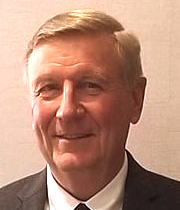 Everyone taking prescription medications should be aware of essential safety practices. Here are six tips to help ensure you are taking your medicine correctly and safely:
Everyone taking prescription medications should be aware of essential safety practices. Here are six tips to help ensure you are taking your medicine correctly and safely:
1. Maintain a Comprehensive Medication List
Keep an up-to-date list of everything you take, and share it with every healthcare provider you see (doctors, specialists, dentists, and pharmacists).
- Include: All prescription drugs, over-the-counter (OTC) medications, vitamins, herbs, and dietary supplements.
- Detail: The name, dosage, how often you take it, and the reason it was prescribed.
- Why it matters: This is the most crucial step to prevent dangerous drug-to-drug interactions, to ensure you don't accidentally overdose on two products with the same active ingredient, and to help your doctor avoid prescribing medicine you shouldn't take.
2. Know the "Five W's" of Each New Drug
Before you leave the doctor's office or the pharmacy, make sure you know the following for every new prescription:
- What is the name of the drug and what is it for?
- When should I take it (e.g., morning, night, with food, on an empty stomach)?
- What are the most common side effects, and when should I call the doctor?
- What foods, drinks (like alcohol or grapefruit juice), or other medications should I avoid?
- Why am I taking this (What is the goal of the therapy)?
3. Take Your Medication Exactly as Prescribed
Consistency is key to the drug's effectiveness and your safety.
- Follow Directions: Take the exact dose at the exact time(s) specified. Do not skip doses, and never take a larger dose because you think it will work faster.
- Do Not Stop Early: Finish the full course of a prescription (especially antibiotics), even if you start to feel better. Never stop taking a maintenance drug on your own; always consult your doctor first.
- Ask Before Modifying: Do not crush, cut, or chew tablets unless your pharmacist or doctor specifically says it is safe, as this can affect how the drug is absorbed or release the medicine too quickly.
4. Use a Single Pharmacy
Whenever possible, fill all your prescriptions at the same pharmacy.
- Interaction Check: This allows your pharmacist—who is a medication expert—to have a complete and centralized record of your profile and automatically check for potential drug interactions or dosage conflicts.
- Ask Questions: Your pharmacist is your best resource for practical advice on when and how to take a medication and what common side effects to expect.
5. Store and Dispose of Medication Safely
Improper storage can ruin the drug's effectiveness, and improper disposal can lead to danger.
- Storage: Keep most medications in a cool, dry place, away from heat and direct sunlight. The bathroom medicine cabinet is often too humid for proper storage.
- Security: Always store medications, especially controlled substances and pain relievers, in a secure place out of reach and out of sight of children, pets, and visitors.
- Disposal: Never flush medicine down the toilet or throw it in the trash unless the label specifically instructs you to. Find a drug take-back program or a community disposal site (often at local police departments or pharmacies) for safe disposal of unused or expired drugs.
6. Never Share or Borrow Prescription Medication
Medications are prescribed based on an individual's specific medical condition, weight, allergies, and other concurrent medications.
- For You Only: Never take medicine prescribed to another person, even if you have the same symptoms. What is helpful for one person could be dangerous or deadly for another.
- Do Not Share: Never give your prescription to a family member or friend. If you have unused medication, dispose of it safely.
Prosper and be in health.
* * *
William Garst is a consultant pharmacist who lives in Alachua, Florida. He is semi-retired and works part time at Lake Butler Hospital in Lake Butler, Florida. William received his pharmacy degree at Auburn University and a Doctor of Pharmacy from Colorado University. The Pharmacy Newsletter is a blog where you can find other informative columns. He may be contacted at This email address is being protected from spambots. You need JavaScript enabled to view it..
# # #
Email editor@
alachuatoday.com
Sept 15 – Oct. 15 is the nationwide celebration of Hispanic Heritage Month. This year’s theme is “Collective Heritage: Honoring the Past, Inspiring the Future,” reminding us that our nation’s strength comes from the diverse people who call it home and the shared commitment to build a better future together.
From the arts and education to business and public service, Hispanic Floridians continue to enrich every aspect of life in our state. Their leadership, creativity, and dedication exemplify the power of community and the enduring belief that opportunity should be within reach for all.
The Florida Commission on Human Relations’ (FCHR) mission is to promote equal opportunity and prevent discrimination by investigating allegations of discrimination in housing, public accommodations, employment, and state whistleblower retaliation as well as educating Floridians about their rights and opportunities. Through our diligent work, we continue to build a Florida where everyone is treated with dignity and respect. For more information or to file a complaint, contact the Florida Commission on Human Relations at (850) 488-7082 or visit www.FCHR.MyFlorida.com.
This month, and throughout the year, we honor the past while inspiring the future, by recognizing the collective heritage that connects us, celebrating the diversity that strengthens us, and reaffirming our commitment to fairness for every Floridian.
Cheyanne Costilla, Executive Director
Florida Commission on Human Relations
The history of vitamin K is a story of a single discovery that later expanded to include a family of related compounds, each with distinct roles in the body. The journey from initial observation to a detailed understanding of vitamin K1 and  K2 spans several decades and involves multiple scientists.
K2 spans several decades and involves multiple scientists.
The Initial Discovery of Vitamin K
The story begins in the late 1920s with Danish biochemist Henrik Dam.
- 1929: Dam was conducting experiments on chickens, feeding them a diet that was deficient in cholesterol and fat. After a few weeks, he noticed that the chickens developed a mysterious bleeding disorder, where their blood was slow to clot.
- 1935: Dam concluded that a new, fat-soluble vitamin was missing from the chickens' diet. He named this substance “Koagulations-Vitamin,” which is German and Danish for “coagulation vitamin.” This is where the letter “K” comes from.
- 1939: American biochemist Edward Doisy and his team at St. Louis University isolated and determined the chemical structure of the primary plant-based form of the vitamin, which they named phylloquinone. This substance would later be officially named Vitamin K1.
For their work on the discovery and chemical nature of vitamin K, Dam and Doisy were jointly awarded the Nobel Prize in Physiology or Medicine in 1943.
Vitamin K1 (Phylloquinone)
- Source: From the very beginning, it was clear that the "anti-hemorrhagic" factor came from plant sources, particularly green, leafy vegetables like spinach and kale.
- Function: Early research, and the Nobel Prize, focused on its essential role in blood coagulation. Vitamin K1 acts as a crucial cofactor for an enzyme that "activates" several clotting factors in the liver, including prothrombin (Factor II), Factor VII, Factor IX, and Factor X. Without this activation, these proteins cannot function properly, leading to uncontrolled bleeding.
- Modern Understanding: Vitamin K1's role in blood clotting remains its most well-known and clinically important function. It is used medically to treat bleeding disorders, and is routinely given to newborns to prevent a condition called Vitamin K Deficiency Bleeding (VKDB).
Vitamin K2 (Menaquinones)
The story of vitamin K2 is more recent and has led to a re-evaluation of the entire vitamin K family.
- Discovery of a Second Form: Soon after the discovery of vitamin K1, scientists realized that there was another form of vitamin K. This second form, found in animal products and produced by bacteria, was chemically different. It was named menaquinone and collectively referred to as Vitamin K2. Unlike K1, which has a single chemical structure, K2 is a family of related compounds, designated as MK-4, MK-7, MK-9, etc., based on the length of their side chain.
- Japanese Fermented Foods: A major breakthrough in the understanding of K2 came from research into the traditional Japanese food natto, a dish of fermented soybeans. Scientists discovered that natto was an incredibly rich source of a long-chain menaquinone, specifically MK-7. This led to a boom in research on K2's health benefits.
- Beyond Blood Clotting: While K1 is primarily used by the liver for blood coagulation, researchers found that K2 has a different fate in the body. It is preferentially used by other tissues, especially bone and arterial tissues.
- The “Calcium Paradox”: A key aspect of modern K2 research is its role in “calcium trafficking.” Scientists have discovered that K2 activates proteins like osteocalcin in bones, which helps bind calcium and integrate it into the bone matrix. At the same time, K2 activates Matrix Gla Protein (MGP), a protein that prevents calcium from building up in soft tissues like arteries. This led to the theory that K2 may play a significant role in both bone health (preventing osteoporosis) and cardiovascular health (preventing arterial calcification).
Summary of Key Differences and Modern Research
|
Feature |
Vitamin K1 (Phylloquinone) |
Vitamin K2 (Menaquinones) |
|
Primary Source |
Green leafy vegetables |
Fermented foods (natto, cheese), animal products (egg yolks, some meats), and gut bacteria |
|
Primary Function |
Blood coagulation (clotting) |
Bone health, cardiovascular health (preventing arterial calcification) |
|
Historical Focus |
The first form of the vitamin discovered; initial research focused entirely on this form for its anti-hemorrhagic effects. |
A later discovery, with its distinct functions only becoming widely known and studied in the last few decades. |
|
Chemical Structure |
A single compound (phylloquinone) |
A family of compounds (menaquinones), denoted as MK-4, MK-7, etc. |
The history of vitamin K is a testament to how scientific understanding evolves. What began as a single discovery of a “coagulation vitamin” has expanded to encompass a complex family of nutrients with far-reaching effects on human health.
Prosper and be in health.
* * *
William Garst is a consultant pharmacist who lives in Alachua, Florida. He is semi-retired and works part time at Lake Butler Hospital in Lake Butler, Florida. William received his pharmacy degree at Auburn University and a Doctor of Pharmacy from Colorado University. The Pharmacy Newsletter is a blog where you can find other informative columns. He may be contacted at This email address is being protected from spambots. You need JavaScript enabled to view it..
# # #
Email editor@
alachuatoday.com
~ The First Recorded Clinical Trial in 1747 ~
The history of Vitamin C is closely linked to the understanding and eventual conquest of scurvy, a debilitating and often fatal disease that  plagued sailors on long voyages for centuries.
plagued sailors on long voyages for centuries.
Early Observations
As early as the 15th century, it was noted that certain foods, particularly citrus fruits, had a curative effect on scurvy. Vasco da Gama's voyages, for instance, observed this link.
In 1747, James Lind, a British naval surgeon, conducted a controlled experiment demonstrating that citrus fruits effectively prevented scurvy. He compared various treatments among sailors with scurvy and found that only those receiving oranges and lemons recovered. This is perhaps, the first recorded clinical trial.
Despite Lind's groundbreaking work, it took several decades for the British Navy to mandate citrus fruit or juice as a regular provision for sailors, earning them the nickname “limeys.”
The Dawn of Vitamin Research:
In 1912, Casimir Funk introduced the concept of “vitamins” as essential dietary components. The anti-scorbutic factor was soon recognized as a water-soluble substance, initially called “water-soluble C.”
Isolation and Identification:
In 1928, Hungarian scientist Albert Szent-Györgyi isolated a substance from animal adrenal glands, naming it “hexuronic acid.” He suspected it might be the anti-scorbutic factor.
Around the same time, in 1932, American biochemist Charles Glen King also isolated vitamin C in his laboratory and concluded it was the same as Szent-Györgyi's hexuronic acid. There was some dispute over who made the definitive connection first, possibly due to communication delays.
Working independently, Szent-Györgyi and his colleague Joseph Svirbely conducted experiments on guinea pigs (which, like humans, cannot synthesize vitamin C) and proved that hexuronic acid was indeed the anti-scorbutic factor. They renamed it “ascorbic acid,” meaning “anti-scurvy.”
Structural Determination and Synthesis:
In 1933, British chemist Norman Haworth determined the chemical structure of vitamin C. Haworth and Szent-Györgyi jointly proposed the name “ascorbic acid”
Both Szent-Györgyi and Haworth were awarded Nobel Prizes in 1937 for their work on vitamin C. Szent-Györgyi received the Nobel Prize in Physiology or Medicine for his discoveries concerning biological combustion, with specific reference to vitamin C, and Haworth received the Nobel Prize in Chemistry for his work on the constitution of carbohydrates and vitamin C.
Further Discoveries and Applications:
Szent-Györgyi continued his research, famously identifying paprika as an exceptionally rich and easily accessible source of vitamin C, allowing for its production in larger quantities.
Since its discovery, vitamin C has been extensively studied for its various roles in human health, including its function as an antioxidant, its involvement in collagen synthesis, immune function, and iron absorption.
Today, vitamin C is recognized as an essential nutrient, and its deficiency is known to cause scurvy, characterized by symptoms like weakness, bleeding gums, and poor wound healing.
Research continues to explore the potential benefits of vitamin C in preventing and treating various diseases.
The history of vitamin C is a compelling story of scientific investigation driven by the need to combat a devastating disease. From empirical observations to isolation, structural determination, and synthesis, the journey to understanding and utilizing this essential nutrient has significantly impacted human health
* * *
William Garst is a consultant pharmacist who lives in Alachua, Florida. He is semi-retired and works part time at Lake Butler Hospital in Lake Butler, Florida. William received his pharmacy degree at Auburn University and a Doctor of Pharmacy from Colorado University. The Pharmacy Newsletter is a blog where you can find other informative columns. He may be contacted at This email address is being protected from spambots. You need JavaScript enabled to view it..
# # #
Email editor@
alachuatoday.com
As a concerned citizen of Florida, I am writing to express my deep alarm over the recent decision to eliminate all vaccine mandates in our state. Vaccines have long been one of the most effective and life-saving public health tools we have. Rolling back these protections threatens to reverse decades of progress against diseases like measles, mumps, and polio — illnesses that vaccines had nearly eliminated.
This decision will not affect all Floridians equally. Black and Brown communities, already facing disproportionate rates of chronic illness, limited access to care, and systemic health inequities, will bear the heaviest burden. Without the safeguard of mandates, these communities are at greater risk of disease outbreaks and preventable deaths.
I am also concerned about the issue of trust. Our nation’s history of medical neglect and mistreatment of Black and Brown populations has left a deep scar of mistrust in the healthcare system. Abrupt policy changes such as this risk eroding fragile progress in building confidence and could reinforce skepticism toward public health guidance.
Beyond the health risks, there are serious financial and economic consequences. Preventable outbreaks lead to increased healthcare costs, hospitalizations, and strain on already overburdened medical systems. Families who cannot afford time off work or unexpected medical bills will be disproportionately harmed. Local businesses and schools may also face disruptions if vaccine-preventable diseases reemerge, causing lost productivity and economic instability. In short, what may appear to be a rollback of regulation could instead create higher costs for families, communities, and the state as a whole.
While individuals should have the right to make informed decisions — including the ability to opt out under certain circumstances — public health policy must balance personal choice with the protection of children, immunocompromised individuals, and entire communities. Without mandates or robust equity-driven alternatives, our most vulnerable neighbors will be left unprotected.
Faith and cultural values are also central to many families’ health decisions. Public health efforts should engage and respect these perspectives. But removing mandates outright, without strong outreach, education, and access initiatives, will send us backward — leaving communities exposed to diseases that science has already taught us how to prevent.
I urge you to reconsider this decision. If mandates are to be removed, Florida must implement strong, equity-focused measures to ensure that every Floridian — regardless of race, income, or faith — is protected. Public health policy must be guided not only by science and fairness but also by a recognition of the enormous economic and financial strain that preventable outbreaks place on families and our state.
Roberta C. Lopez
Archer, Florida
The history of the B vitamins is a fascinating journey that spans several decades and involves the work of numerous scientists. Initially  thought to be a single nutrient, it was later discovered to be a complex group of essential water-soluble vitamins with distinct functions. Here's a brief overview of their discovery:
thought to be a single nutrient, it was later discovered to be a complex group of essential water-soluble vitamins with distinct functions. Here's a brief overview of their discovery:
The Beriberi Connection
The story begins in the late 19th Century with the investigation of beriberi, a debilitating disease prevalent in regions where polished white rice was a dietary staple.
- 1889: Dutch physician Christiaan Eijkman, working in the Dutch East Indies (now Indonesia), observed that chickens fed polished white rice developed beriberi-like symptoms, which were reversed when they were fed unpolished brown rice. This suggested a nutritional deficiency.
- 1906: English biochemist Frederick Gowland Hopkins proposed the existence of "accessory food factors" beyond fats, proteins, and carbohydrates that were essential for growth and health.
The “Vitamine” Concept
- 1911: Polish biochemist Casimir Funk, working in London, isolated a substance from rice polishings that could cure beriberi in pigeons. He proposed that this and other similar substances were vital amines, coining the term “vitamine.” Although not all vitamins are amines, the name stuck (later dropping the “e”).
Distinguishing Multiple Factors
- 1913: American biochemist Elmer McCollum distinguished between “fat-soluble factor A” and “water-soluble factor B,” recognizing that there was more than one essential nutrient in the water-soluble category.
Isolation and Identification of Individual B Vitamins:
The subsequent decades saw the isolation and characterization of the individual B vitamins:
- Vitamin B1 (Thiamin): Isolated in crystalline form in 1926 by Dutch chemists Barend Jansen and Willem Donath. It was the first B vitamin to be identified and was found to be the anti-beriberi factor.
- Vitamin B2 (Riboflavin): First observed as a yellow-green fluorescent pigment in milk in 1872, it was characterized and named riboflavin in the early 1930s.
- Vitamin B3 (Niacin): Its deficiency was linked to pellagra in 1915 by Joseph Goldberger. The chemical structure was determined in 1937 by Conrad Elvehjem.
- Vitamin B5 (Pantothenic Acid): Discovered in 1933 by Roger J. Williams while researching essential nutrients for yeast.
- Vitamin B6 (Pyridoxine): Identified in 1934 by Paul Gyorgy.
- Vitamin B7 (Biotin): Research spanned the early 1900s, with contributions from Margaret Averil Boas (1927) and Paul Gyorgy (who named it Vitamin H in 1939), among others.
- Vitamin B9 (Folate/Folic Acid): Identified in 1933 by Lucy Wills for its role in preventing a type of anemia during pregnancy.
- Vitamin B12 (Cobalamin): Its deficiency was linked to pernicious anemia. It was isolated in 1947 by Karl Folkers and his team.
The “B Complex”
As each water-soluble vitamin with a distinct function was discovered, they were grouped together as the “vitamin B complex.” This term reflects their shared water solubility and their common occurrence in many of the same foods, as well as their often-interconnected roles in metabolic processes.
Nobel Prizes
The importance of B vitamin research is highlighted by the Nobel Prizes awarded to scientists involved in their discovery and understanding:
- 1929: Christiaan Eijkman and Sir Frederick Gowland Hopkins were jointly awarded the Nobel Prize in Physiology or Medicine for their work on the discovery of vitamins. Eijkman's work focused on the link between diet and beriberi (leading to the identification of Vitamin B1), while Hopkins was recognized for his broader contributions to the understanding of essential nutrients.
- 1934: George Whipple, George Minot, and William Murphy received the Nobel Prize for their work on the treatment of pernicious anemia using liver extracts, which eventually led to the isolation of Vitamin B12.
- 1964: Dorothy Hodgkin was awarded the Nobel Prize in Chemistry for her work on determining the structures of important biochemical substances, including Vitamin B12.
Modern Understanding
Today, we have a detailed understanding of the chemical structures, functions, dietary sources, and deficiency symptoms of each of the B vitamins. They are known to play crucial roles as coenzymes in numerous metabolic pathways, affecting energy production, nerve function, red blood cell formation, DNA synthesis, and many other vital processes.
It's worth noting that several other substances were once considered part of the B complex and assigned B numbers (like B4, B8, B10, B11), but these were later found to be either synthesized by the body or not essential and were thus removed from the official list of B vitamins
* * *
William Garst is a consultant pharmacist who lives in Alachua, Florida. He is semi-retired and works part time at Lake Butler Hospital in Lake Butler, Florida. William received his pharmacy degree at Auburn University and a Doctor of Pharmacy from Colorado University. The Pharmacy Newsletter is a blog where you can find other informative columns. He may be contacted at This email address is being protected from spambots. You need JavaScript enabled to view it..
# # #
Email editor@
alachuatoday.com
MILTON, Fla. — Today, Governor Ron DeSantis announced the first set of awards through the Broadband Opportunity Grant Program to expand access to broadband internet for Florida’s underserved communities. More than $144 million was awarded for 58 projects in 41 Florida counties for broadband internet expansion that will impact nearly 160,000 unserved residential, educational, business, and community locations.
“I am proud to be in Santa Rosa County to announce the first awards through Florida’s Broadband Opportunity Program,” said Governor Ron DeSantis. “Broadband internet access creates jobs and enhances educational opportunities for Floridians. I look forward to continued investments through this program to ensure Florida families have access to important resources no matter where they live.”
“Broadband internet service is essential for workforce development, education, and healthcare. Thanks to Governor DeSantis’ leadership, Florida has taken monumental steps to bring reliable, high-speed internet to all Floridians,” said Department of Economic Opportunity Deputy Secretary Ben Melnick. “There is no doubt that the projects awarded today will shape the future of broadband in Florida, and we look forward to supporting the Governor’s vision for a connected economy.”
Administered by the Florida Department of Economic Opportunity (DEO), the Broadband Opportunity Program funds the installation and deployment of broadband internet infrastructure in unserved Florida communities, providing valuable access to telehealth, economic, educational, and workforce development opportunities to offer a brighter future for all Floridians.
The following projects will be awarded through the Broadband Opportunity Program:
- City of Bonifay ($4,984,073) — to provide fiber to the home (FTTH) services to 259 unserved premises in the rural area of Holmes County north of Bonifay with speeds up to 200 megabits per second (MBPS).
- Towns of Bell, Cross City, and Horseshoe Beach ($3,506,234) — to complete the first of three phases designed to bring FTTH services to over 11,000 of its metered customers in Gilchrist and Dixie Counties at speeds up to 2 gigabits per second (GB).
- City of Trenton ($2,666,244) — to provide FTTH services to 1,965 premises with symmetrical 1GB speeds to residents in Gilchrist County.
- Cities of Palm Bay, West Melbourne, and Titusville; Mims and Unincorporated Brevard County ($573,788) — to provide FTTH services to 443 unserved and underserved locations within Brevard County with minimum download speeds of 300 MBPS and upload speeds of 10 MBPS.
- City of Bonifay ($4,998,524) — to provide FTTH services to 266 unserved premises in the rural area of Holmes County in the vicinity of Bonifay with download and upload speeds of 200 MBPS.
- City of Keystone Heights; Clay Hill, Middleburg, McRae and Virginia Village ($1,880,000) — to provide FTTH services to 1,917 premises, 42 businesses and 8 community anchor institutions in Clay County capable of symmetrical download and upload speeds of 100 MBPS.
- Putnam County ($1,192,410) — to add 60 miles of fiber optic cable to their existing network to provide FTTH services to 1,192 unserved locations within Putnam County with symmetrical download and upload speeds of 1GB.
- City of Archer; Town of Micanopy ($4,672,393) — to add 132 miles of fiber optic cable to their existing network to provide FTTH services to 1,701 unserved locations within Alachua County with minimum symmetrical download and upload speeds of 100 MBPS.
- City of Gainesville ($1,438,610) — to add 27 miles of fiber optic cable to their existing network to provide FTTH services to 193 unserved locations within Alachua County with minimum symmetrical download and upload speeds of 100 MBPS.
- City of Ocala ($1,423,488) — to add 53 miles of fiber optic cable to their existing network to provide FTTH services to 1,022 unserved locations within Marion County with minimum symmetrical download and upload speeds of 100 MBPS.
- Cities of Archer and Newberry ($4,822,632) — to add 78 miles of fiber optic cable to their existing network to provide FTTH services to 795 unserved locations within Alachua County with minimum symmetrical download and upload speeds of 100 MBPS.
- Town of Cross City ($5,000,000) — to deploy fiber optic cable and infrastructure to provide fiber to the home services to 1,067 unserved locations within Dixie County at minimum symmetrical download and upload speeds of 100 MBPS.
- Town of Westville ($1,072,596) — to provide FTTH services for unserved areas within Holmes County at download and upload speeds up to 200 MBPS.
- City of Live Oak; Towns of Mayo and Day ($5,000,000) — to add 1,016 miles of fiber optic cable to their existing network to provide FTTH services to 25,679 unserved and underserved locations within Suwannee and Lafayette Counties with minimum symmetrical download and upload speeds of 100 MBPS.
- Cities of Live Oak and Jasper; Towns of White Spring and Jennings ($5,000,000) — to add 757 miles of fiber optic cable to their existing network to provide FTTH services to 28,493 unserved and underserved locations within Suwannee and Hamilton Counties with minimum symmetrical download and upload speeds of 100 MBPS.
- City of Bokeelia ($63,311) — to add 1.1 miles of fiber optic cable to provide FTTH services to 110 unserved locations within Lee County with minimum symmetrical download and upload speeds of 200 MBPS.
- City of Moore Haven; Lakeport and Ortona ($2,935,296) — to add 160 miles of fiber optic cable to provide FTTH services to 4,651 unserved and underserved locations within Glades County with minimum symmetrical download and upload speeds of 1 GBPS.
- Town of Cross City ($2,020,902) — to add 58.8 miles of fiber optic cable to provide FTTH services to 2,612 unserved and underserved locations within Dixie County with minimum symmetrical download and upload speeds of 1 GBPS.
- City of Riverdale; Flagler Estates and Spuds ($1,830,000) — to add 118 miles of fiber optic cable to provide FTTH services to 1,603 unserved and underserved locations within St. Johns County with minimum symmetrical download and upload speeds of 1 GBPS.
- City of LaBelle; Montura ($2,496,672) — to add 58.8 miles of fiber optic cable to provide FTTH services to 1,424 unserved and underserved locations within Hendry County with minimum symmetrical download and upload speeds of 1 GBPS.
- Lehigh Acres ($3,988,532) — to add 126 miles of fiber optic cable to provide FTTH services to 1,998 underserved locations in eastern Lee County with minimum symmetrical download and upload speeds of 1 GBPS.
- Cities of Botswick and Keystone Heights; Towns of Pomona Park, Interlocken, Melrose, and Welaka; Putnam Hall, George’s Lake, and Unincorporated Crescent City ($4,496,107) — to deploy fiber optic cable service to 2,986 unserved and underserved locations within Putnam County with minimum download speeds of 50 MBPS and upload speeds of 10 MBPS.
- Lehigh Acres ($4,111,225) — to deploy fiber optic cable service to 2,640 unserved and underserved locations within Lee County with minimum download speeds of 50 MBPS and upload speeds of 10 MBPS.
- Cities of Hampton, Lawtey, and Starke ($2,160,000) — to deploy fiber optic cable service to 2,111 unserved and underserved locations in Bradford County with minimum download speeds of 50 MBPS and upload speeds of 10 MBPS.
- Columbia County ($2,646,030) — to deploy fiber optic cable service to 1,725 unserved and underserved locations in Columbia County with minimum download speeds of 50 MBPS and upload speeds of 10 MBPS.
- City of Fort Pierce of ($1,429,400) — to deploy fiber optic cable service to 636 unserved and underserved locations in St Lucie County with minimum download speeds of 50 MBPS and upload speeds of 10 MBPS.
- Cities of Clewiston, Moore Haven, and Pioneer; Montura, Palmdale, Port LaBelle and Venus ($5,000,000) — to deploy FTTH services to more than 4,231 unserved locations in Glades, Hendry, and Highlands Counties with symmetrical download and upload speeds of between 1GB and 2GB.
- Town of Nocatee; Unincorporated Brownsville ($1,657,558) — to provide FTTH services to 1,313 unserved and underserved residential customers in DeSoto County with 50 MBPS download and 10 MBPS upload speeds.
- Town of Ponce de Leon ($3,639,672) — to deploy FTTH services to 259 unserved homes, businesses, and farms in Holmes County with download and upload speeds up to 200 MBPS speeds.
- Towns of Alford, Cottondale, Grand Ridge, and Greenwood; Two Egg ($2,040,743) — to provide FTTH services to 1,082 unserved and underserved residential customers and 29 businesses and anchor institutions in Jackson County with symmetrical download and upload speeds of 1GB.
- City of Homestead; Redlands and Unincorporated Florida City ($1,510,481) — to provide FTTH services to 800 unserved and underserved residential customers and 10 businesses and anchor institutions in Miami-Dade County with symmetrical download and upload speeds of 1 Gbps or higher.
- Clarksville and Unincorporated Northwest Calhoun County ($2,648,194) — to add 99.8 miles of FTTH via ethernet passive optical network to connect 716 underserved homes and businesses in Calhoun County with a standard starting speed of up to 300 MBPS download and 10 Mbps upload speeds.
- Town of Altha; Willis, Chipola, Eufala, and Unincorporated Northeast Calhoun County ($3,375,471) — to add 142.1 miles of fiber-to-the-premises (FTTP) via ethernet passive optical network to connect 1,210 unserved and underserved homes and businesses in Calhoun County with a standard starting speed of up to 300 MBPS download and 10 MBPS upload speeds.
- City of Bunnell; Andalusia and Bimini ($527,659) — to add 20.2 miles of FTTP via ethernet passive optical network to connect 128 unserved and underserved homes and businesses in Flagler County with a standard starting speed of up to 300 MBPS download and 10 MBPS upload speeds.
- Cities of Chattahoochee, Gretna, and Quincy; Town of Greensboro; Wetumpka ($1,844,095) — to add 281.7 miles of FTTP via ethernet passive optical network to connect 3,390 unserved and underserved homes and businesses in Gadsden County with a standard starting speed of up to 300 MBPS download and 10 MBPS upload speeds.
- City of Pioneer; La Deca and Montura ($4,750,000) — to bring high speed internet service to eastern Hendry County through installation of fixed wireless service to 1,700 households at download speeds of 100 MBPS and upload speeds of 10 MBPS.
- City of Punta Gorda; Port Charlotte ($2,397,636) — to provide FTTH services to 1,469 unserved or underserved residential customers and 195 businesses in Charlotte County with 1GBPS or higher symmetrical download and upload speeds.
- North Brooksville, Spring Lake, Nobleton, South Brooksville, Hill ‘N Dale, Istachatta, North Weeki Wachee, and Unincorporated Hernando County ($4,701,477) — to add 258.5 miles of FTTP via ethernet passive optical network to connect 2,276 underserved homes and businesses in Hernando County with a standard starting speed of up to 300 MBPS download and 10 MBPS upload.
- City of Graceville; Unincorporated Northeast Holmes County ($107,317) — to add 9.1 miles of FTTP via ethernet passive optical network to connect 97 unserved or underserved homes and businesses in Holmes County with a standard starting speed of up to 300 MBPS download and 10 MBPS upload.
- City of Williston Town of Bronson; Morriston, Raleigh, Williston Highlands, Rosewood, and Sumner ($1,259,236) — to add 48.1 miles of FTTP via ethernet passive optical network to connect 405 unserved or underserved homes and businesses in Levy County with a standard starting speed of up to 300 MBPS download and 10 MBPS upload.
- City of Bristol; Town of White Springs; Lake Mystic, Estiffanulga, and Unincorporated NE Liberty County ($836,705) — to add 47.8 miles of FTTP via ethernet passive optical network to connect 433 unserved or underserved homes and businesses in Liberty County with a standard starting speed of up to 300 MBPS download and 10 MBPS upload.
- Deer Park and Bull Creek ($3,605,129) — to deploy 135.4 miles of new fiber optic cable and provide FTTH services to 1,024 unserved locations within Osceola County with download speeds of 300 MBPS and upload speeds of 10 MBPS.
- Yeehaw Junction and Kenansville ($4,067,268) — to deploy 153.5 miles of new fiber optic cable and provide FTTH services to 791 unserved locations within Osceola County with download speeds of 300 MBPS and upload speeds of 10 MBPS.
- Town of Jay; Fidelis, Berrydale, Cobbtown, and Unincorporated Santa Rosa County, ($2,363,937) — to deploy 103.7 miles of new fiber optic cable and provide FTTH services to 791 unserved locations within Santa Rosa County with download speeds of 300 MBPS and upload speeds of 10 MBPS.
- Geneva and Black Hammock ($367,000) — to deploy 51.7 miles of new fiber optic cable and provide FTTH services to 734 unserved locations within Seminole County with download speeds of 300 MBPS and upload speeds of 10 MBPS.
- City of Lake Helen; DeLeon Springs, Balm, Farmton, Osteen, and Boden ($811,000) — to deploy 124.1 miles of new fiber optic cable and provide FTTH services to 1,622 unserved locations within Volusia County with download speeds of 300 MBPS and upload speeds of 10 MBPS.
- Cities of Fountain, Southport, and Youngstown ($866,700) — to deploy fiber optic cable internet service to 2,500 unserved households in Bay County with download and upload speeds of up to 1GBPS.
- Unincorporated Okeechobee County ($2,059,550) — to deploy fiber optic cable internet service to 2,312 unserved households in Okeechobee County with download and upload speeds of up to 1GBPS.
- Unincorporated Okeechobee County ($984,350) — to deploy fiber optic cable internet service to 1,290 unserved households in Okeechobee County with download and upload speeds of up to 1GBPS.
- Orangetree and Golden Gate Estates ($777,407) — to deploy fiber optic cable internet service to 781 unserved households in Collier County with download and upload speeds of up to 1GBPS.
- Cities of Sebring and Avon Park ($1,363,975) — to deploy fiber optic cable internet service to over 700 unserved households in Highlands County with download and upload speeds of up to 1GBPS.
- Chaires ($236,300) — to deploy fiber optic cable internet service to over 119 unserved households in Leon County with download and upload speeds of up to 1GBPS.
- Unincorporated Indian River County ($532,147) — to deploy fiber optic cable internet service to 674 unserved households in the unincorporated areas in Indian River County with download and upload speeds of up to 1GBPS.
- City of Jasper; Town of Jennings ($2,734,261) — to deploy fiber optic cable internet service to 2,156 unserved households in Hamilton County download and upload speeds of up to 1GBPS.
- Indiantown ($56,500) — to deploy fiber optic cable internet service to 50 unserved households in Martin County with download and upload speeds of up to 1GBPS.
- Escambia County ($802,489) — to deploy 24.8 miles on new fiber optic cable and provide FTTH services to 206 unserved locations within Escambia County with minimum download speeds of 300 MBPS and upload speeds of 10 MBPS.
- Town of Bell ($4,956,100) — to employ fixed wireless technology to provide high speed internet service to 1,350 unserved premises in Gilchrist County.
- Polk County ($4,734,786) — to lease 8 miles of fiber optic cable to provide fixed wireless services to 22,169 unserved and underserved locations in and around the City of Lakeland, City of Winter Haven, City of Haines City and City of Lake Wales.
# # #
Email editor@
alachuatoday.com


